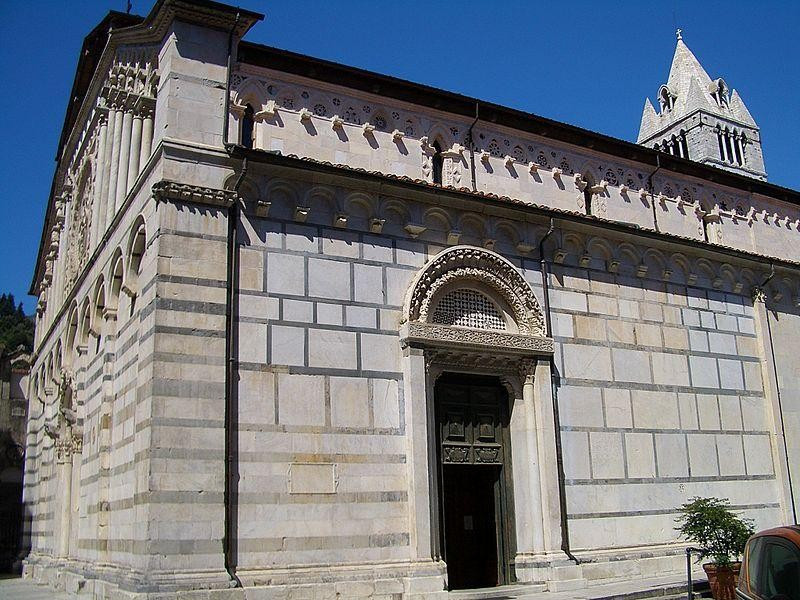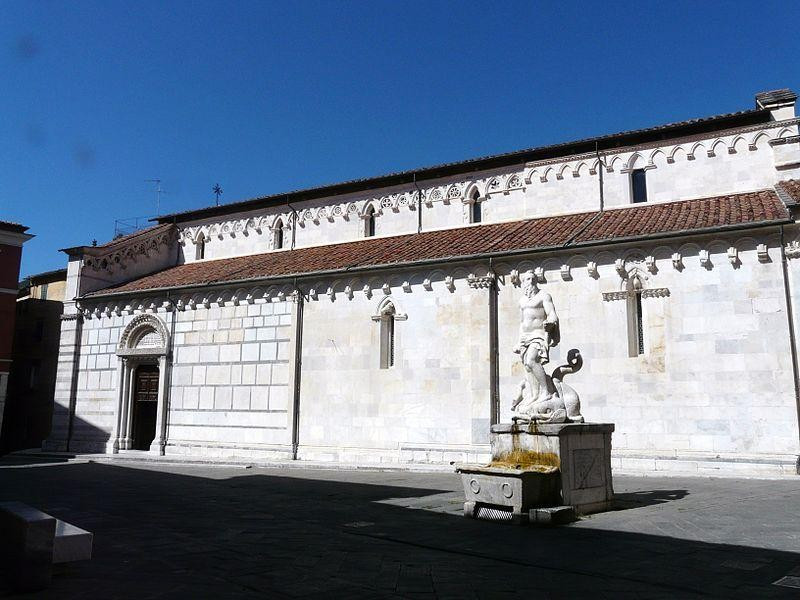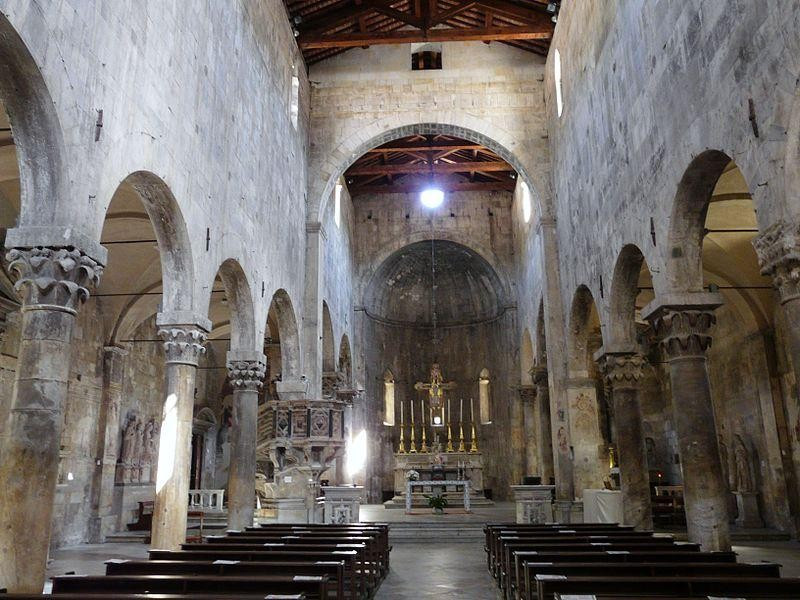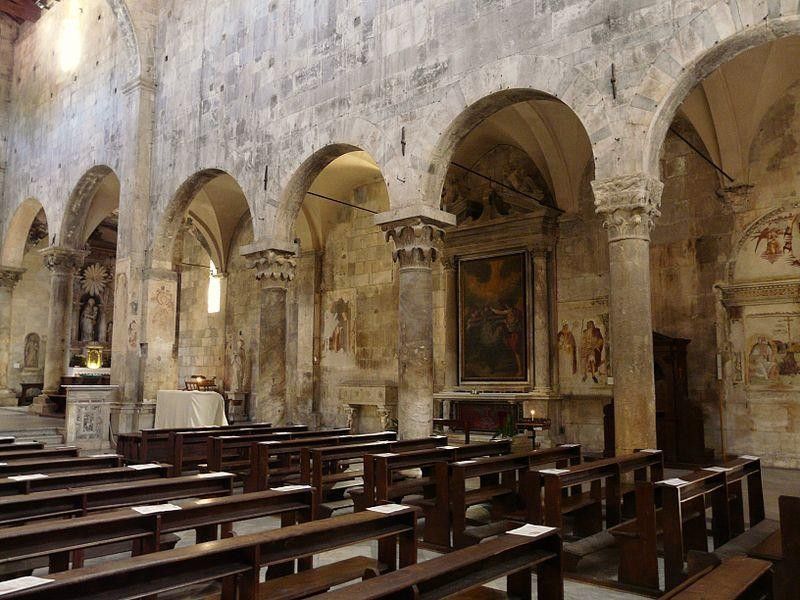Duomo di Sant'Andrea Apostolo
St. Andrew the Apostle's Cathedral dates back to the eleventh century. The only evidence from ancient Ecclesia of 1035, is a relief. The first extension, connected with the elevation to a baptismal parish (1093), is readily identifiable in the building today. The first order of the facade has a hanging two-tone, with marble geometric inlays (XII century) and numerous Neo-ancient references. The facade is characterized by rampant arches and sculptures: those of the main portal and the capitals have been recognized mastery of Parma. In continuation of the side, not more two-tone, the Corinthian capitals and mullioned windows decorated with foliacei, human figures and animals, has identified the recovery of forms and Classic decorations and early Christian. The building was built using marble as formwork, with machined surface and elements of Gothic style. The plant is rectangular with three naves and semicircular apse: the nave is covered by wooden trusses in sight, the aisles, from vaults. The Church has been greatly altered after the Second World War, with the deletion of magnificent Baroque altars. The high altar is dominated by a fourteenth-century crucifix attributed to Angelo Puccinelli, surrounded by fifteenth large marble balustrades. Oratory, known as "Big company", besides the Baptistery, there are two baptismal fonts fifteenth and the altar of "redemption", with a relief by Gian Antonio Cybei.






